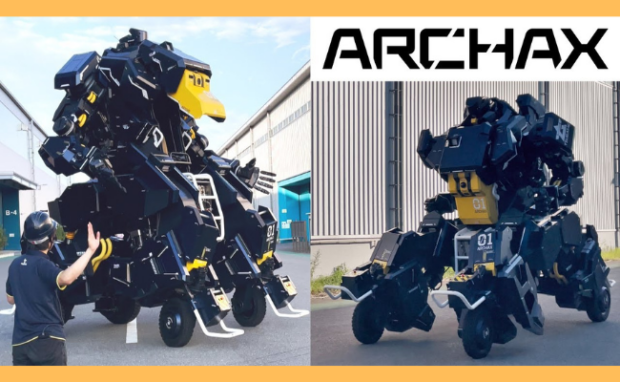M4 multi-terrain robot will join NASA’s next Mars mission
California Institute of Technology researchers have created a multi-terrain, transforming robot to join NASA’s next Mars exploration. The Multi-Modality Mobility Morphobot or M4 could turn into a four-wheeled vehicle and a drone-like helicopter in seconds. The Caltech expert team said, “At NASA, we’re being tested right now for transforming while landing.”
Robotics has significantly advanced while retaining its original purpose: to have robots perform roles that are too dangerous or repetitive for humans. Soon, the M4 will follow that directive by conducting ground and air surveys of the Red Planet. More importantly, it may revolutionize numerous societal sectors like disaster management and supply chain logistics.
This article will discuss how Caltech’s M4 robot works and its real-world applications. Later, I will cover similar projects from NASA and other experts.
What are the M4’s features?
The Multi-Modality Mobility Morphobot seems unassuming at first because it looks like a remote-controlled toy car. Yet, you’d be surprised when it spreads its wheels outward!
The wheels contain rotors that propel the M4 into the air. Then, it could land and retract its rotors to move like a four-wheeled vehicle again. This transforming robot also has a unique way of climbing up steep surfaces. Contrary to popular belief, it wouldn’t need to float to reach the top.
Instead, its rear wheels convert into rotors, pushing the two front wheels forward. The Space.com YouTube demo video explained using rotors too often would drain the robot’s energy quickly.
Pushing it while standing on two wheels is a more energy-efficient method. It may seem impractical on Earth, but it is invaluable on the Red Planet.
After all, the machine can’t recharge itself via power outlets in outer space, and solar power isn’t reliable. Also, the Caltech researchers published their findings in Nature Communications and explained animals inspired the M4’s design:
You may also like: Could display drones snuff out the firework?
“The robotic biomimicry of animals’ appendage repurposing can yield mobile robots with unparalleled capabilities. Taking inspiration from animals, we have designed a robot capable of negotiating unstructured, multi-substrate environments, including land and air, by employing its components in different ways as wheels, thrusters, and legs.”
Robotics 24/7 news reported the team couldn’t believe the people’s interest in the project. Caltech researcher Mory Gharib said, “We’re kind of dizzy about how it suddenly got so much attention. Different organizations want to do different things and are coming to approach us.
For example, several Los Angeles fire departments contacted him regarding the transforming robot. “For first responders, this is huge because you need to land in a safe area and then drive into the situation.”
What are projects similar to the M4 robot?

Photo Credit: odditycentral.com
The National Aeronautics and Space Administration has been developing another robot: Valkyrie. It is a humanoid robot that will assist astronauts in future space missions.
It could scout an area to ensure the environment is safe for human explorers. However, its first mission is on Earth, overseeing oil rigs in a Woodside Energy facility in Western Australia.
“NASA plans to leverage experience operating Valkyrie in Woodside’s facilities to learn how to better design robots for work in dirty and hazardous conditions, like those found on the Moon at the long-term worksites and habitats that will be established as part of future Artemis missions,” said the space org.
You may also like: More schools offer drone lessons
It will inspect infrastructure for workers, and the energy company will send data to help NASA improve Valkyrie. Meanwhile, Japanese startup Tsubame revealed Archax, a 15-foot-tall transforming robot.
It can contract its wheels to stand upright and spread them to move like a four-wheeled vehicle. Also, it has articulated fingers, hands, and arms that enable it to grab objects.
The best part is you can ride it! However, most people may not afford one because it costs $2.5 million. Still, Archax may help various industries develop robotics applications.
Conclusion
The M4 robot has wheels with rotors inside, allowing it to turn into a four-wheeled vehicle and a flying drone anytime. Soon, we would likely see it in the next NASA mission.
This year is a treat if you’re a space exploration enthusiast because NASA unveiled several projects. Also, India and other countries have been exploring the stars, too.
Their missions often involve technologies that we may adapt for daily use. Ensure you know about these innovations at Inquirer Tech before they become popular.